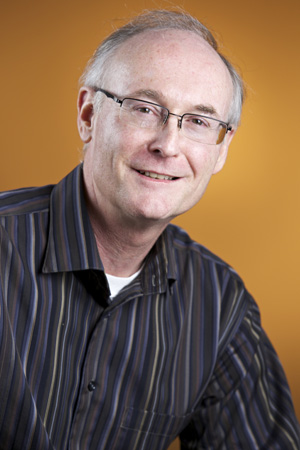
by Jane Sevier
As the prevalence of autism increases—2012 figures from the Centers for Disease Control show it is up to 1 in 88 children from 1 in 100 in 2009—the National Institutes of Health (NIH) Autism Centers of Excellence (ACE) research program is stepping up efforts to investigate the causes of autism spectrum disorders (ASD) and to pinpoint new treatments.
Last year, NIH announced grant awards of $100 million over five years, expanding inquiries into new areas such as children and adults with autism who have limited or no speech. Professors Paul Yoder and Ann Kaiser of Vanderbilt Peabody College of education and human development have received ACE grants to study language interventions for young children with autism.

“Early intervention with autism is one of the big success stories,” said Paul Yoder, professor of special education at Peabody. “Not to minimize autism’s effect on families, but it’s not the long-term bad news that it used to be. Newer treatment models have shown to be very effective. We’ll be testing the relative effectiveness of two of these models.
“Another important question is how long teaching sessions should be. Medicine has dose—how much medicine to take. The analogy in education is the length of a session. Thus, we’ll have four groups of children.
These four groups will differ by the teaching method used and the length of the teaching sessions per day. We want to match the method and amount of teaching to children’s characteristics measured before early intervention beings. This is an unprecedented study.”
Yoder leads the Nashville site in an ACE treatment network that will conduct a randomized controlled clinical trial to ascertain the effects of intensity and delivery style on the developmental progress of toddlers with ASD.
All participants in Yoder’s study will be younger than 27 months, an age at which most children with autism are not speaking at all. Nashville’s part of the project will be carried out at Ft. Campbell, Ky., which has the Army’s fourth-largest Exceptional Family Member Program (EFMP). EFMP furnishes treatment, therapy, education, training, or counseling to Army family members with physical, emotional, developmental or intellectual disorders.
“There’s real potential for change here,” Yoder said. “If we can show that one method works better than another and it can be implemented within a particular base, this grant can have major policy implications and perhaps show the U.S. government that this method should be applied throughout the Army.”
Yoder believes that the extensive treatment the project involves can greatly reduce autism symptoms and improve the children’s brain development.
“[rquote]We can’t move all kids off the autism spectrum, but if we can move a substantial number or greatly reduce the severity of autism symptoms, then that gives you a sense of how much early intervention can impact the brain,” he says[/rquote]. “Think about the brain as waiting to be stimulated. Children who have autism often don’t do the kinds of behaviors that naturally recruit optimal types or amount of stimulation. Treatment provides a lot of stimulation thought to facilitate brain development. Thus we may see the brain change in ways it wouldn’t otherwise. In this way, early intervention may literally change the trajectory of brain and behavioral development.”

Ann Kaiser, Susan W. Gray Professor of Education and Human Development in the Peabody Department of Special Education, is involved in a four-city study that will compare two types of intensive, daily instruction for children with ASD who use only limited verbal communication. Even after early language-skills training, about a third of school-aged children with ASD remain minimally verbal.
“We are working with 5- to 8-year-olds who have less than 20 words,” Kaiser said. “The goal is to get them to use language in a social, communicative way. Many of them are incredibly smart, and we don’t know why they don’t have language.”
The study examines two established approaches to teaching children who are minimally verbal. The first intervention, Discrete Trial Training (DTT), uses behavioral teaching methods to directly instruct children in the core skills needed for communication. The second intervention (Joint Attention, Symbolic Play and Emotion Regulation-Enhanced Milieu Teaching [JASP-EMT]), blends naturalistic language teaching procedures with strategies to teach joint attention, symbolic play and emotion regulation. JASP-EMT focuses on social and attentional foundations for communication as well as teaching spoken words.
In the blended intervention, the adult and child interact around activities that the child is interested in, such as toys, games or favorite routines. The adult responds to the child’s play and attempts to communicate, models new language and play, and scaffolds interactions to extend engagement and social exchanges as a way to build social use of language in context. For example, the adult joins the child playing with Magnatiles (a favorite toy), plays at the child’s current level and models new play acts to extend play. During this interaction, the adult models language, responds if the child attempts to communicate, and occasionally prompts the child. Kaiser’s team will study whether this method that teaches social foundations and early communication is more effective than a direct teaching approach that targets skills prerequisite for spoken language such as matching, imitating and understanding words.
“I’m excited about the design of the study. Kids get randomly assigned to one of the two approaches, and their progress is monitored. After 24 sessions, if a child is responding, we continue the treatment he is in and add parent training. If a child is a slow responder, we begin a blended treatment that incorporates components of the other teaching method. For some, a blended intervention that combines direct teaching and naturalistic teaching may be the ‘rescue’ that is required to support their emergent communication.
“We will see 50 kids whose minimal spoken language skills would often exclude them from intervention research. Each child gets treatment, and it’s customized for each based on his response to it.”
By the end of the five-year study, Kaiser believes her team will have an effective treatment model for minimally verbal children, they’ll understand which model works best for each type of child, and they’ll have an early-read system that indicates effectiveness of treatment and provides a strategy for adjusting the treatment to maximize its effectiveness.
Additional reporting by Jennifer Wetzel and Kara Furlong